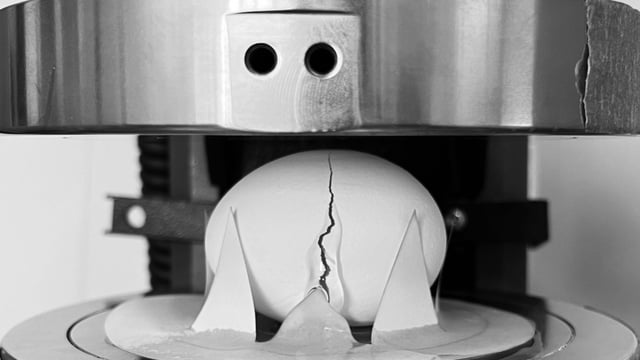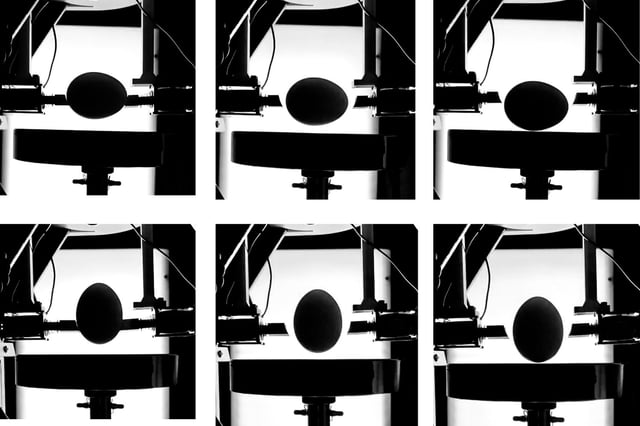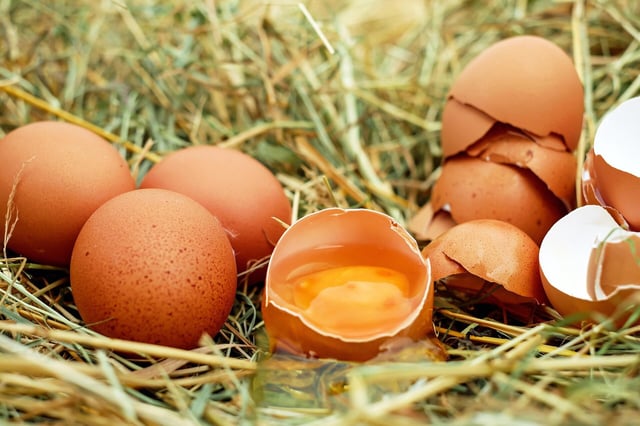Overview
- MIT researchers conducted 180 drop tests and compression experiments, finding eggs are less likely to crack when dropped horizontally rather than vertically.
- More than half of vertically dropped eggs cracked from a height of 8 millimeters, while fewer than 10% of horizontally dropped eggs cracked from the same height.
- Compression tests revealed that horizontally loaded eggs could absorb more energy before breaking, despite requiring the same force to crack in both orientations.
- The study highlights the distinction between stiffness and toughness, showing that vertically oriented eggs are stiffer but more brittle under dynamic impact.
- Findings suggest potential applications in redesigning egg packaging for better protection and inspire bio-inspired engineering for dynamic load resilience.



